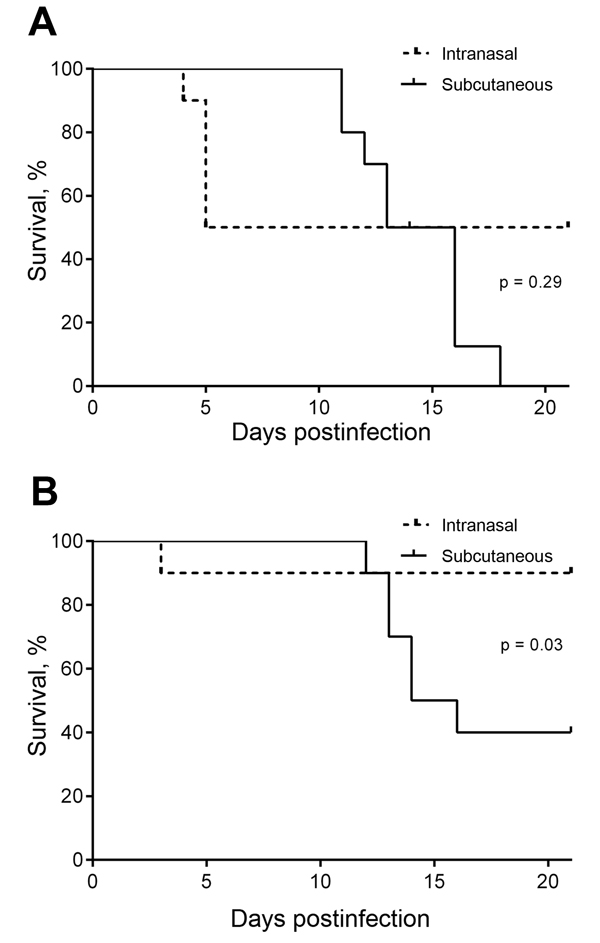Volume 21, Number 1—January 2015
Research
Neurotropic Threat Characterization of Burkholderia pseudomallei Strains
Figure 1

Figure 1. Comparison of survival after intranasal and subcutaneous infection of BALB/c mice with equivalent doses of the neurologic Burkholderia pseudomallei isolates MSHR435 (5 × 102 CFU) (A) and MSHR1153 (4.5 × 102 CFU) (B), Northern Territory, Australia, October 1989–October 2012. This inoculation dose was >50× the 50% infectious dose for MSHR435 and MSHR1153, delivered by intranasal or subcutaneous inoculation. Data are expressed as percentage survival; 10 mice were monitored within each group for 21 days postinfection.
Page created: December 17, 2014
Page updated: December 17, 2014
Page reviewed: December 17, 2014
The conclusions, findings, and opinions expressed by authors contributing to this journal do not necessarily reflect the official position of the U.S. Department of Health and Human Services, the Public Health Service, the Centers for Disease Control and Prevention, or the authors' affiliated institutions. Use of trade names is for identification only and does not imply endorsement by any of the groups named above.